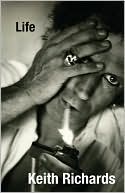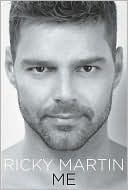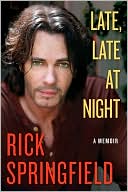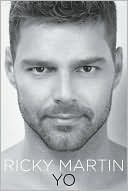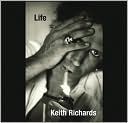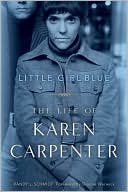Bob Dylan: Behind the Shades Revisited
In 1991 Clinton Heylin published what was considered the most definitive biography of Bob Dylan available. In 2001 he completely revised and reworked this hugely acclaimed book, adding new sections, substantially reworking text, and bringing the story up-to-date with Dylan's explosive career in 2000.\ Bob Dylan: Behind the Shades Revisited follows the story of Dylan from his humble beginnings in Minnesota to his arrival in New York in 1961, his subsequent rise in the folk pantheon of...
Search in google:
Written by Bob Dylan's most prolific chronicler, this magisterial biography illuminates what drives, inspires, influences, and shapes the man behind the music. Beginning with Dylan's fiercely individualistic childhood in Minnesota, Clinton Heylin explores Dylan's arrival in New York in 1960, his subsequent rise as heir-apparent to Woody Guthrie, his emergence as the unwitting leader of the highly political fold revival of early '60's Greenwich Village, and his sudden and shocking metamorphosis into rock's poetic guiding force. Heylin also details the rest of this influential artist's mercurial career, including the lost years of the '80s, Dylan's struggles with addiction, and his re-emergence as a triumphant and revered '90s troubadour—winner of three 1997 Grammys, including Album of the Year—who spends most of his life on the road.Bob Dylan is an endlessly fascinating yet obsessively private person; this is the first time his fans will truly get to know the man behind the shades. Publishers Weekly Because he was denied access to Dylan for this unauthorized biography, Heylin (Bob Dylan: The Recording Sessions, 1960--1994) was driven to dig particularly deep. In this update to his 1991 tome, based on unpublished manuscripts such as the diaries from Dylan's 1974 tour and the Blood on the Tracks recording sessions, which were unavailable 10 years ago, along with new, original interviews, Heylin documents "a constant, unresolvable conflict between man and artist." This makes for a morbid, albeit fascinating, 40-year epic with a 260-person chorus that boasts childhood friends, George Harrison, Robbie Robertson, Joan Baez and Dylan's various and sundry "unworthy muses." Everyone, it seems, is singing Dylan's praises and cursing him at the same time, but Heylin is able to make out his subject's voice: the former Robert Zimmerman is a prisoner to his 1960s persona, he says, and in the musician's attempts to protect his artistic and human right to change, he had to slowly withdraw from his overdemanding public. Although this biography should be touted for not fixating on Dylan's golden Blonde on Blonde era (it briefly covers the 1990s), between the lines, Heylin is nostalgic--not for the pre-motorcycle accident, amphetamine-wired Dylan, but for a younger, less tired one who writes almost as much as he tours. With a subtitle that says "revisited," only die-hard fans will be among the few willing to crack this tome. (Oct.) Copyright 2000 Cahners Business Information.
Chapter One\ \ \ \ 1941-55: In My Younger Days\ \ \ \ My country is the Minnesota-North Dakota territory / that's where I was born an learned how t walk an / it's where I was raised an went to school...my / youth was spent wildly among the snowy hills an / sky blue lakes, willow fields an abandoned open / pit mines. contrary t rumors, I am very proud of / where I'm from an also of the many blood streams that / run in my roots.\ -- Bob Dylan, 1963\ You can change your name / but you can't run away from yourself\ -- Bob Dylan, 1967\ At a 1986 press conference a middle-aged, slightly wizened rock'n'roller insisted, 'I'm only Bob Dylan when I have to be.' Asked who he was the rest of the time, he replied, 'Myself.' His creator, forty-five-year-old Robert Allen Zimmerman, had been a mere nineteen when he had reinvented himself as Bob Dylan: just three years older than the Arthur Rimbaud who wrote to his old teacher, Georges Izambard, in May 1871 and proclaimed, 'Je suis un autre'; barely three years younger than his maternal grandfather, Benjamin David Solemovitz, when, in 1906, he took off from Connor's Point, Wisconsin, to rematerialize three years later working as a clerk for a fellow Jew, Abraham Friedman, in Hibbing, Minnesota, henceforth to be known simply as Ben Stone.\ Back in Connor's Point, Stone had had a sister named Ida, a year younger, by all accounts a pretty little thing. That is, until September 24, 1906, when a young Scotsman named John Young shot poor little Ida down, before blowing his own brains out with a .32 revolver. Young had been living in rooms adjoiningthe Solemovitzes' for three years and had become more than friendly with Ida. But Young had refused to recognize the ostracism that would have resulted had Ida chosen to marry outside her faith. According to the Superior Telegram, 'Young was madly infatuated with the girl...a difference of opinion is apparent as to whether the girl reciprocated his love.' Her father, Sam, refused to countenance the possibility that his baby girl might have died for love. Ben, who was close to his sister and devastated by her death, undoubtedly knew better.\ Leaving the family behind in Wisconsin, Solemovitz chose to reinvent himself seventy-five miles north, in Hibbing, at the heart of Minnesota's Iron Range, a scabrous landscape shaped by intensive strip-mining that created both the largest man-made pit and the largest slag heap in the world. Founded by the adventurer Frank Hibbing in 1892, after he had cleared a road west from Mountain Iron, Hibbing was erected near to the spot where he had apparently awoken one crisp winter morn and uttered the immortal phrase, 'I believe there is iron under me -- my bones feel rusty.'\ By the time Ben Stone had found employment with Abraham Friedman, the boomtown had already acquired eighty-eight hundred citizens, sewers, a municipal lighting plant, a fire department, and the largest grade-school building north of the Twin Cities, Minneapolis and St. Paul. However, by 1921 the mining companies found that Frank Hibbing had not erected the town near to the best ore but directly on top of it, and the whole town, houses and all, had to be moved on rollers to the suburb of Alice, leaving street signs and tracks from the old Hibbing behind. Living on the edge of such a surreal wasteland was bound to affect anyone, particularly those for whom the Moving of Hibbing was merely local folklore.\ Bob Dylan: I ran into a girl [one time]...She said I was a strange person and she told me why. She said, 'You were born in a certain area where the ground is metallic.' [1980]\ Ben Stone had been just five in 1888, when his parents, Robert ('Sabse') and Bessie Solemovitz, abandoned the plains of Lithuania for the promise of Superior, Wisconsin. Though Stone left Superior behind in 1906, his heart and the heart of his family remained behind. When he died in May 1945 he chose to be buried in Superior, even though he and his wife, Florence -- who had also lived in Superior when she had first arrived in America from Lithuania -- had lived in Hibbing for nearly four decades. Their four children, and their grandchildren, all still lived in Hibbing save for their eldest daughter, Beatrice, who lived in Duluth with her husband Abraham Zimmerman and their four-year-old son, Robert. Whether 'Beatty' brought her son to the funeral of his maternal grandfather has not been recorded. Whatever the case, Florence Stone, née Edelstein, now found herself a widow at the age of fifty-three.\ Florence Edelstein had been the eldest of ten children, the whole clan being presided over by Florence's imposing father, Benjamin Harold Edelstein, a salesman from Kovno who had arrived in Hibbing from Superior, aged thirty-six, with his wife, Lybba, and his then six children in 1906, shortly before young Ben Stone hit town. Once established in Hibbing, 'BH' abandoned selling furniture and stoves and entered the entertainment business, purchasing the first of four Edelstein theaters, the Victory. As vaudeville gave way to the dependable escapism flickering off the movie screen, Edelstein expanded his operations to include the Gopher on Howard, the State, also on Howard, and the Homer on Ist. That a town of just eighteen thousand could support four cinemas in the forties suggests just how central the images conveyed from Hollywood became to postwar middle America.\ Beatrice R. Stone was the second of Ben and Florence's four children. Born three years after her brother Vernon, on June 16, 1915, she was a vivacious child and a devoted member of a large, and seemingly ever expanding, family unit. Though Hibbing would always be a curious place to grow up a Jew -- the town was largely given over to Slavic Catholics and Nordic Lutherans -- Beatty's large family cocooned her.\ Bob Dylan: Behind the Shades Revisited. Copyright © by Clinton Heylin. Reprinted by permission of HarperCollins Publishers, Inc. All rights reserved. Available now wherever books are sold.
\ From Barnes & NobleThe Barnes & Noble Review\ Clinton Heylin's Bob Dylan: Behind the Shades: Revisited is an updated, revised and expanded edition of the long-out-of-print 1991 biography. Only the fourth comprehensive biography of the artist, Heylin's is the first ever to give equal weight to all phases of Dylan's sweeping 40-years-and-counting career.\ \ \ Heylin's great area of strength is where many will feel it should be: the music. No Dylanist is more knowledgeable about the man's history in the recording studio, and Heylin appears to have seen about every Dylan concert since the '74 comeback. Of his many original sources, most are musical associates (Dylan's intimate friends have been famously protective of his privacy); the result is a definitive career study of Bob Dylan as working musician.\ Thus we read in detail not only about Dylan's early life as a nonconforming teenager in Minnesota's Iron Range and about the first, meteoric stage of his career -- the extraordinary years from 1961 to 1967 -- but also of the many unpredictable turns his path has taken in the succeeding decades. Heylin gives equal attention to Dylan's post-motorcycle-accident retreat in Woodstock (where, working with The Band, he virtually invented "Americana" as a rock genre), the record-breaking 1974 comeback tour with The Band, the full resumption of his earlier powers with Blood on the Tracks, the troubled Rolling Thunder Revue and blows to his credibility with Renaldo and Clara, his wholly unanticipated turn to born-again Christianity and years spent spreading the gospel in concert; and finally his '90s re-emergence as a weathered, revered troubadour who, touring hundreds of nights a year, seems intent on bringing his music to every city and town in the United States.\ There is, of course, a reason why that first phase of Dylan's career has always been given the lion's share of attention: It was a white-hot burst of unparalleled creativity that changed pop music for all time. In comparison, his work of the last three decades, while studded with many shining peaks, has often seemed haphazard and desultory to all except a diminished but loyal following. Heylin is by no means uncritical of the fruits of all those later incarnations; indeed, his judgements on some of Dylan's more dubiously canonical works can be harsh enough to strip paint. Yet he is so intent on making us see the career whole, with every chameleon twist related for better or worse to every other -- demonstrably the work of the same man, behind the shades -- that the final effect is not only revealing, but empathetic. (Edward Hutchinson)\ \ \ \ \ \ Publishers Weekly - Publisher's Weekly\ Because he was denied access to Dylan for this unauthorized biography, Heylin (Bob Dylan: The Recording Sessions, 1960--1994) was driven to dig particularly deep. In this update to his 1991 tome, based on unpublished manuscripts such as the diaries from Dylan's 1974 tour and the Blood on the Tracks recording sessions, which were unavailable 10 years ago, along with new, original interviews, Heylin documents "a constant, unresolvable conflict between man and artist." This makes for a morbid, albeit fascinating, 40-year epic with a 260-person chorus that boasts childhood friends, George Harrison, Robbie Robertson, Joan Baez and Dylan's various and sundry "unworthy muses." Everyone, it seems, is singing Dylan's praises and cursing him at the same time, but Heylin is able to make out his subject's voice: the former Robert Zimmerman is a prisoner to his 1960s persona, he says, and in the musician's attempts to protect his artistic and human right to change, he had to slowly withdraw from his overdemanding public. Although this biography should be touted for not fixating on Dylan's golden Blonde on Blonde era (it briefly covers the 1990s), between the lines, Heylin is nostalgic--not for the pre-motorcycle accident, amphetamine-wired Dylan, but for a younger, less tired one who writes almost as much as he tours. With a subtitle that says "revisited," only die-hard fans will be among the few willing to crack this tome. (Oct.) Copyright 2000 Cahners Business Information.\ \ \ Library JournalWith 60 new pages covering Bob Dylan's activities in the 1990s and an additional 150-plus pages expanding on the existing text, Heylin's reworking of his 1991 biography of the same name (LJ 6/1/91) is more than a mere update. (In fact, the earlier book now looks like merely a warm-up.) Heylin's sweep of detail, abetted by a tenacity for uncovering the truth amidst conflicting sources, and his insightful critical commentary make this new version the most authoritative Dylan biography available. Knowing this, Heylin cockily criticizes other Dylan biographers and shows off to his readers with unexplained, obscure references to Shakespeare and others, assuming that his audience will understand the connection to Dylan's work. Heylin prides himself on devoting more attention to Dylan's post-1966 motorcycle accident life than other biographers and offers a refreshingly honest analysis of the artist's work on record, stage, and screen and in print. Highly recommended for music and popular culture collections.--Lloyd Jansen, Stockton-San Joaquin Cty. P.L., CA Copyright 2000 Cahners Business Information.\ \


